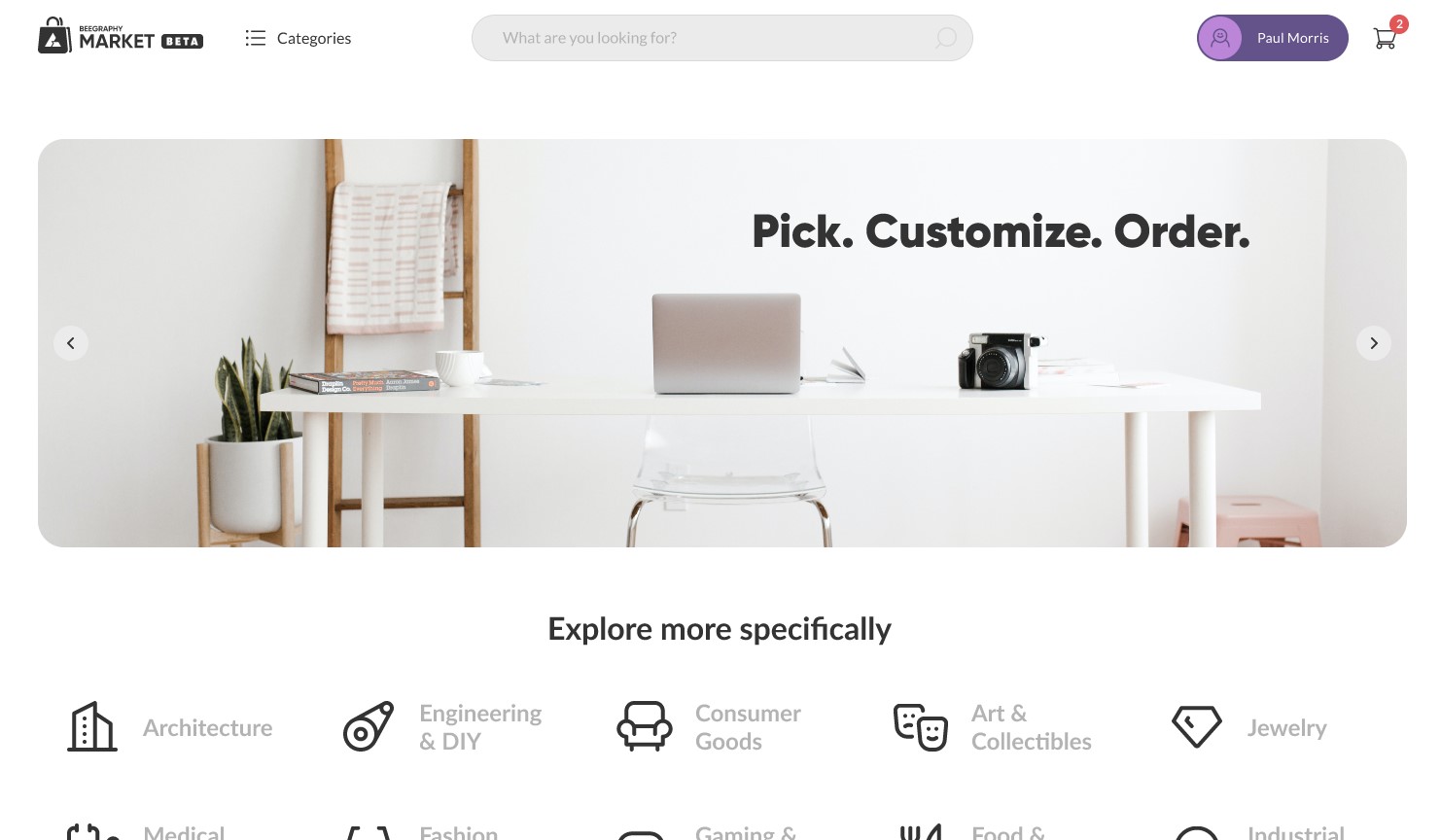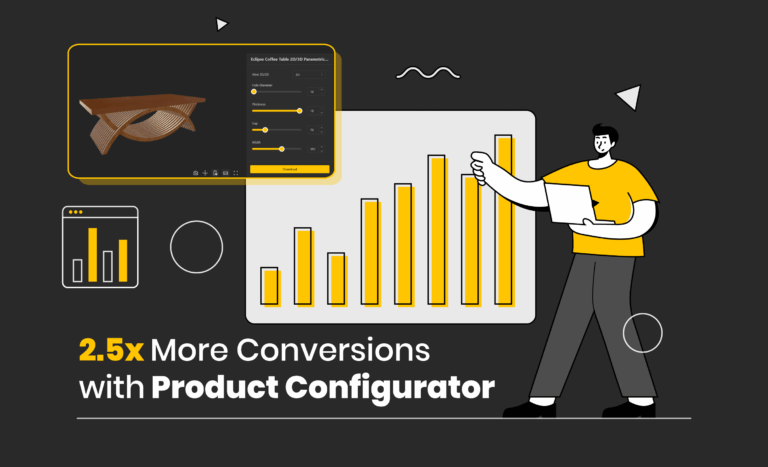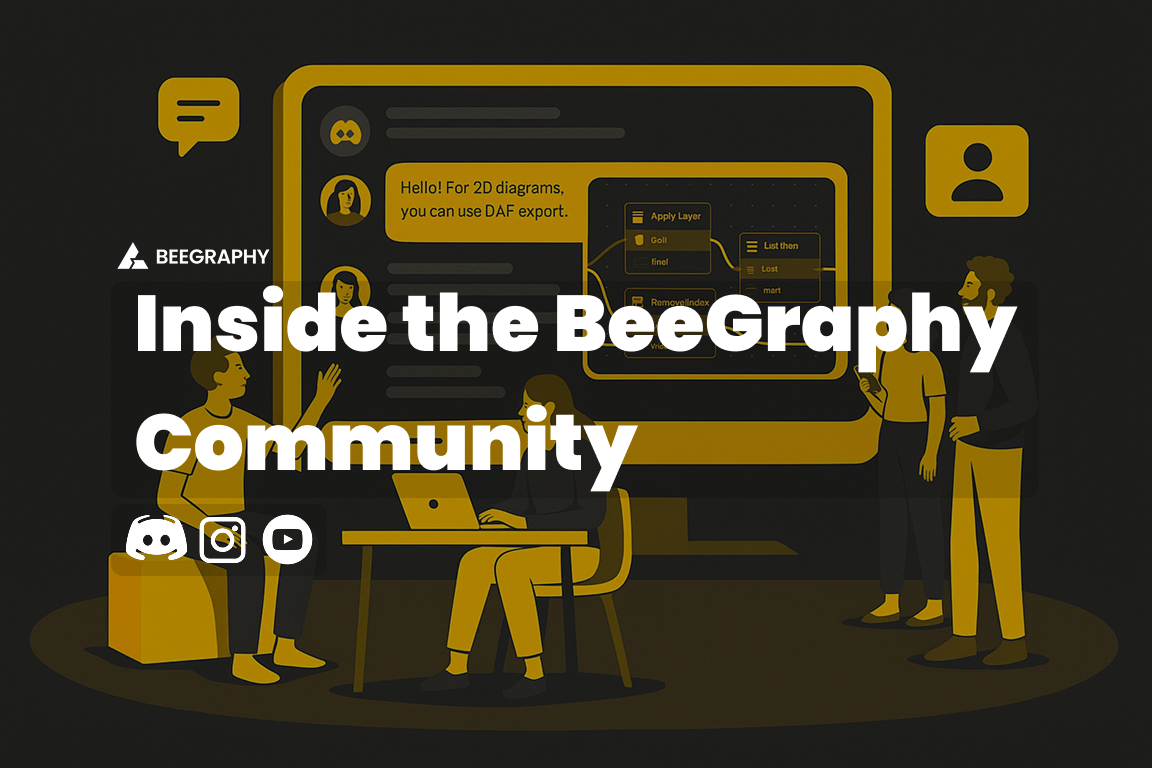Table of Contents
Computational design, at its core, is the intersection of creativity and technology. It involves using algorithms, data, and computer-aided design tools to generate innovative solutions and optimize designs. As industries continue to embrace digital transformation, computational design has gained immense importance. It is now a critical component in fields like architecture, engineering, product design, and visual effects.
With the growing significance of computational design, the demand for skilled professionals in this domain is on the rise. This trend has created abundant opportunities for freelancers to showcase their expertise and collaborate with clients on exciting projects. This blog post aims to provide valuable insights and strategies to help freelancers monetize their computational design skills. Whether you are a seasoned designer or just starting your freelance journey, the following sections will guide you on how to thrive in the world of computational design freelancing.
Understanding the Freelance Market for Computational Design
The freelance market for computational design is vibrant and ripe with opportunities for skilled professionals. As businesses increasingly recognize the value of computational design, the demand for freelance designers in this field continues to grow.
One of the key advantages of freelancing in computational design is the flexibility it offers. As a freelancer, you have the freedom to choose the projects you work on, set your own schedule, and work from anywhere in the world. This flexibility allows you to strike a healthy work-life balance and tailor your workload to suit your preferences.
Moreover, freelancing provides access to a diverse range of project options. From designing cutting-edge architectural structures to creating stunning visual effects for movies, freelancers in computational design have the opportunity to work on exciting and varied projects. This diversity not only keeps the work engaging but also allows freelancers to expand their skill set and explore different aspects of their craft.
Another enticing aspect of freelancing in computational design is the potential for higher earnings. As a freelancer, you have the ability to negotiate your rates based on the complexity of projects, your level of expertise, and the market demand. By consistently delivering high-quality work and building a strong reputation, you can attract clients willing to pay a premium for your services, leading to increased earning potential.
In the freelance market, there are several platforms and marketplaces specifically tailored for computational designers. Websites such as Upwork, Freelancer, and Toptal provide a vast array of computational design projects posted by clients from around the world. These platforms offer a convenient way to connect with clients, showcase your portfolio, and secure freelance opportunities. Additionally, industry-specific platforms and communities like Behance, BeeGraphy, Dribbble, and CGSociety can also serve as valuable resources for finding computational design projects and networking with fellow professionals.
By leveraging the flexibility, diverse project options, and potential for higher earnings in the freelance market, computational designers can establish a thriving career while honing their skills and expanding their professional network.
Building a Strong Computational Design Portfolio
A compelling portfolio is a powerful tool for freelancers in computational design. It not only attracts potential clients but also serves as a visual representation of your skills and expertise. A well-crafted portfolio showcases your capabilities, demonstrates your problem-solving abilities, and highlights your technical proficiency. Here are some tips for creating an effective computational design portfolio:
- Select diverse and relevant projects: Choose a range of projects that showcase your versatility and expertise. Include examples from different industries or sectors to demonstrate your ability to adapt to various design challenges. Highlight projects that align with your target clients’ needs and interests.
- Showcase problem-solving abilities: When presenting your work, provide insights into the problem you were tasked with solving and how you approached it. Explain the design process, challenges encountered, and innovative solutions implemented. Demonstrating your ability to tackle complex problems effectively will impress potential clients.
- Demonstrate technical proficiency: On BeeGraphy, you have the opportunity to demonstrate your technical proficiency in computational design. Showcase your mastery of computational design tools, software, and programming languages by including samples that highlight your expertise. Don’t forget to emphasize any unique or advanced techniques you employ to achieve desired outcomes. By doing so, you will effectively showcase your ability to leverage technology in your design process, further establishing yourself as a skilled computational designer on the platform.
- Present a cohesive and visually appealing portfolio: Pay attention to the overall presentation of your portfolio. Ensure consistency in layout, color schemes, and typography to create a cohesive visual identity. Use high-quality visuals, such as renderings, animations, or interactive prototypes, to make your portfolio visually engaging and interactive.
- Highlight client feedback and results: Include testimonials or feedback from previous clients to provide social proof of your skills and professionalism. Showcase measurable results and the impact your designs had on clients’ projects or businesses. This evidence of your contributions can significantly enhance your credibility.
- Continuously update your portfolio: Keep your portfolio up to date with your latest work, skills, and achievements. As you complete new projects or acquire new skills, incorporate them into your portfolio to reflect your growth and stay relevant in a rapidly evolving field.
Your portfolio on the BeeGraphy platform is a dynamic representation of your computational design journey. Regularly revisiting and refining it will ensure that it effectively showcases your skills, attracts clients, and sets you apart from the competition in the freelance market. The platform enables to establishment a portfolio of models, where computational designers can showcase their developed parametric works, both in a private version (view only) and as a model for sale.
Identifying Target Clients and Niche Markets
When venturing into freelancing in computational design, it is crucial to identify your target clients and focus on specific niche markets within the field. By doing so, you can position yourself as an expert and cater to the unique needs of your ideal clients. Here are the benefits of identifying target clients and niche markets:
- Tailored solutions: Researching and understanding the needs and pain points of your target clients allows you to offer tailored solutions that directly address their specific challenges. By researching and understanding their client’s needs and pain points, designers can offer customized services that directly meet their requirements. This approach not only increases the value designers bring to the table but also sets them apart from generic competitors.
- Enhanced client relationships: By specializing in a specific area of computational design, such as architecture, product design, or visual effects, you can build deeper expertise and domain knowledge. This expertise helps you communicate effectively with clients, understand their industry-specific terminology, and anticipate their design needs. BeeGraphy’s real-time collaboration and sharing functionality makes your performance more feasible and enhances communication with your clients. All of that fosters trust and strengthens client relationships, leading to long-term cooperation and referrals.
- Reduced competition: Focusing on a niche market reduces direct competition as you carve out a specialized space for yourself. Instead of being a generalist, becoming a specialist in a particular niche allows you to position yourself as a go-to expert in that specific area. This specialization can attract clients looking for precise skills and industry-specific knowledge, setting you apart from freelancers with more generic offerings.
- Increased perceived value: By concentrating on a niche market, you can highlight your expertise and demonstrate a deep understanding of the unique challenges faced by clients in that industry. Clients are often willing to pay a premium for specialized knowledge and experience. This increased perceived value can lead to higher rates and better-quality projects.
By identifying your target clients and focusing on niche markets within the computational design, you can tailor your solutions to meet specific needs, build stronger client relationships, reduce competition, and increase your perceived value. This strategic approach allows you to position yourself as an expert in your chosen field and attract clients who value your specialized skills.
Developing a Strong Online Presence
In today’s digital era, establishing a strong online presence is crucial for freelancers in computational design. It enhances visibility, enables you to showcase your work, and attracts potential clients. Here are the key aspects to focus on when developing your online presence:
- Professional website or portfolio platform: A professional website or portfolio platform serves as your digital storefront, allowing potential clients to explore your work, learn about your skills, and contact you. It should showcase your best projects, provide a clear overview of your services, and include a way for clients to easily get in touch.
BeeGraphy offers a powerful feature that allows users to embed their parametric 3D models on websites and blogs. With this capability, designers can showcase their creations with all the functionality provided by BeeGraphy, including interactive 3D model customization sliders. This feature enhances the user experience, enabling visitors to engage with the models and tailor them to their preferences. By leveraging this embedding feature, BeeGraphy empowers freelancers in computational design to present their work seamlessly and attractively on their online platforms.
Optimize your website or platform for search engines by using relevant keywords and ensuring it loads quickly and is mobile-friendly. - All-in-one designer profile: BeeGraphy is a platform designed exclusively for computational designers, offering a variety of powerful features to elevate their online presence and optimize their workflow. By utilizing BeeGraphy, computational designers can benefit from a wide range of capabilities. They can access free online computational design software, empowering them to create parametric models efficiently. Moreover, BeeGraphy Market provides a dedicated space for designers to establish personalized profiles and portfolios. This functionality serves as a platform for designers to effectively display their skills and projects, providing potential clients with a comprehensive overview of their capabilities.
- Social media engagement: Active engagement on social media platforms can significantly boost your online presence. Share your work, insights, and industry updates regularly to demonstrate your expertise and attract followers. Engage with relevant communities, participate in discussions, and provide valuable input. Platforms like Instagram, Twitter, and LinkedIn are particularly useful for connecting with potential clients and building your professional network.
- Industry events and online communities: Attend industry events, conferences, and workshops to network with potential clients and stay up to date with the latest trends in computational design. Online communities, such as forums and professional groups, offer opportunities to connect with fellow professionals and potential clients. Engage in discussions, share knowledge, and establish yourself as an active and valuable member of the community.
By establishing a professional website or portfolio platform, actively engaging on social media, attending industry events, and participating in online communities, you enhance your online visibility and create opportunities to connect with potential clients. Remember to maintain a consistent and professional online presence, and use these platforms to showcase your skills, build your reputation, and establish yourself as a trusted computational design professional.

Image source: Shutterstock
In this context, the most effective way for you to showcase yourself as a computational design expert and present your best parametric models is by effectively utilizing the unique solutions offered by the BeeGraphy platform.
Your portfolio on BeeGraphy will serve as a dynamic representation of your computational design journey, attracting clients, setting you apart from the competition in the freelance market, and allowing you to demonstrate your expertise through the platform’s portfolio of models.
Pricing Your Services and Negotiating Contracts
Determining the right pricing strategy for your computational design services is crucial for freelancers. Consider the following insights when pricing your services and negotiating contracts:
- Pricing strategies: Take into account factors such as your level of experience, the complexity of projects, and current market rates. If you are just starting out, you may need to set competitive rates to attract clients and build your portfolio. As you gain more experience and expertise, you can gradually increase your prices. Research industry benchmarks and analyze the pricing structures of competitors to ensure your rates are fair and reflective of your skills.
- Communicating value: It’s essential to effectively communicate the value of your services to clients. Emphasize the unique skills, knowledge, and expertise you bring to the table. Highlight the impact your computational design solutions can have on their projects or businesses. By demonstrating the value you can provide, clients are more likely to understand the worth of your services and be willing to pay accordingly.
- Negotiating contracts: When negotiating contracts, it is important to set clear expectations. Clearly define the project scope, including the specific deliverables, timelines, and any limitations or exclusions. Incorporate revision and approval processes to manage client expectations and avoid scope creep. Establish payment terms, such as the percentage or amount due upfront and the schedule for milestone payments or project completion. Ensuring transparency and addressing any potential concerns upfront can help build trust and create a mutually beneficial agreement.
Remember that pricing and contract negotiations are not one-size-fits-all. Each project and client may have different requirements and budgets. Be flexible, but also recognize the value of your skills and the effort you put into your work. By effectively communicating value, setting clear project scopes, and negotiating fair contracts, you can establish a solid foundation for successful collaborations with clients.
Delivering Exceptional Client Experiences
Providing exceptional client experiences is vital for freelancers in computational design. It not only helps build a strong reputation but also increases the likelihood of securing repeat business or receiving referrals. Here are key aspects to focus on when delivering outstanding client experiences:
- Effective communication: Communication is the foundation of successful client relationships. Be proactive in keeping clients informed about project progress, addressing any questions or concerns promptly, and providing regular updates. Clear and open communication ensures that both parties are aligned and reduces the chances of misunderstandings.
- Meeting deadlines: Meeting deadlines is crucial for client satisfaction. Consistently deliver projects on time or even ahead of schedule whenever possible. If unforeseen circumstances arise that may affect the timeline, communicate with the client promptly and discuss potential solutions.
- Receptive to client feedback: Actively listen to client feedback and be receptive to their suggestions or concerns. Implementing client feedback demonstrates your commitment to their satisfaction and helps refine your work. Foster a collaborative environment where clients feel comfortable providing input and know that their opinions are valued.
- Going the extra mile: Strive to exceed client expectations by going above and beyond. This can include providing additional insights, offering suggestions for improvement, or delivering a higher level of service than initially expected. By consistently delivering exceptional work and going the extra mile, you establish yourself as a trusted partner and increase the likelihood of securing long-term relationships.
Remember, exceptional client experiences are key to building a strong reputation in the industry. By focusing on effective communication, meeting deadlines, being receptive to feedback, and going the extra mile, you can foster positive client relationships and position yourself as a freelancer who consistently delivers outstanding results.
Final notes
In conclusion, freelancers in computational design have immense potential to monetize their skills in the growing freelance market. This blog post has explored key strategies for success, including building a strong portfolio, identifying target clients and niche markets, developing an online presence, pricing services, negotiating contracts, and delivering exceptional client experiences.
By leveraging the opportunities available, freelancers can establish thriving careers and attract clients who value their specialized expertise. Continuous skill improvement, staying updated with industry trends, and adapting to evolving client needs are vital for sustained success in this dynamic field.
Freelancers can use tools like the BeeGraphy Editor to create their 3D models. It will let them save money by taking advantage of the free computational design software and will enable them to provide exceptional experiences to their clients because of the innovative collaboration and sharing features.

The screenshot of the home page of BeeGraphy Market.
They can also exploit the BeeGraphy Market to get passive income from sales of their parametric models. The models in their market profile will increase their online presence and will serve them as their online portfolio. And the BeeGraphy Market itself will serve as a priceless source of market data, such as trends and market prices.
So, seize the opportunities, showcase your unique talents, and take proactive steps to build your freelancing career in computational design. With dedication, creativity, and a commitment to excellence, you can turn your computational design skills into a fulfilling and lucrative freelance venture.










